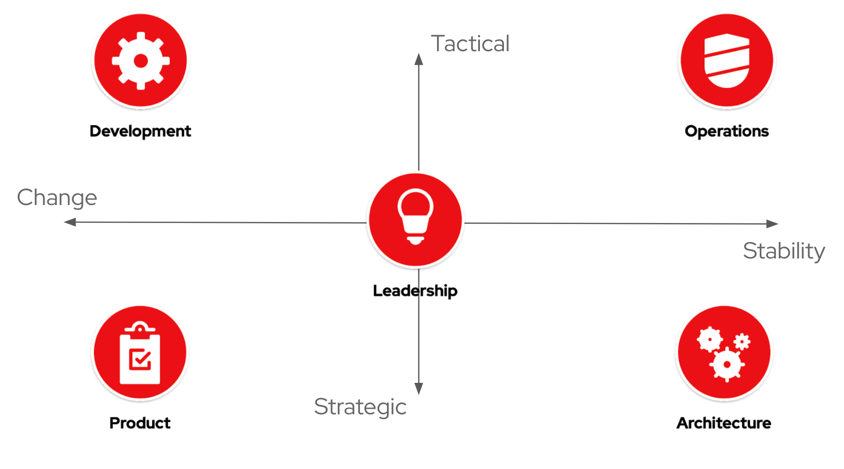Finding the right Bridge Outcomes
The term Outcome refers to an measurable change in human, team, or organizational behavior that achieves a desired business result. A business result typically falls into one of the following categories:
- an Increase in Value (e.g. Revenue)
- a Decrease in Cost
- an Increase in Quality
- an Increase in Happiness
Further Reading
For more information about outcomes, read Outcomes over Outputs by Josh Seiden.
Further Reading
For our definition of Business Results, read Project to Product by Mik Kirsten.
Searching for communication gaps
Over time, communication gaps arise between the Five Elements naturally. Each function cares about different types of work and thinks in varying scopes of time. These simple differences can grow into organizational silos if organizations lack shared outcomes.

While alignment may seem to call for major trade-offs between the five functions, shared measurable outcomes can help bridge these communication gaps.
How we’ve picked our outcomes
The outcomes that we've selected as our bridge outcomes have come from lots of reading, discussion and delivery by our community of contributors in the digital transformation and software delivery space. As much as possible, we'll try to leave breadcrumbs to our thought process through recommended reading.
Further Reading
Like this!
Through discussion and healthy debate, we've come up with a small set of ever-evolving characteristics that seem to be common to all of our outomes.
- A Focus on Outcomes over Outputs
- Ability bridge communication gaps between the five elements
- Use of systems-level thinking to improve as an organization, not individual departments
- The measures used are directional, meaning a change in the data can be interpretted as "better" or "worse".
Exploring Bridge Outcomes
These are some organizational outcomes that satisfy the good metric criteria and correlate to organizational performance. Organizations should choose which specific outcomes reflect their vision of success that they want to invest in regularly measuring. This is intended to be an iterative list of Bridge outcomes. Each outcome has a Dashboard Detail page that describes the outcome, each measure, and the data points required for calculation. Note: Software Delivery Performance is the only outcome readily available in Pelorus.
| Outcome | Definition | Measures(KPIs) | Why it matters |
|---|---|---|---|
| Software Delivery Performance | The ability of the organization to effectively deliver software | Lead Time for Change Deployment Frequency Mean Time to Restore Change Failure Rate |
Per the research in Accelerate, the ability of an organization to effectively deliver software to customers is a key leading indicator of organizational performance. |
| Supported Technology Adoption (Dashboard page coming soon) | A measure of an organization’s ability to become more efficient through reuse of common patterns and platforms. | Adoption Lead Time Adoption Rate Operational Efficiency Developer NPS |
As organizations adopt more lean IT practices and build autonomy in development teams, the role of "centralized IT" evolves from actively provisioning and supporting infrastructure and middleware to providing self-service platforms, tools, and sample patterns that take common needs across development teams and make shared solutions convenient and consumable. This outcome measures the success of that mode of working, called Open Platforming. |